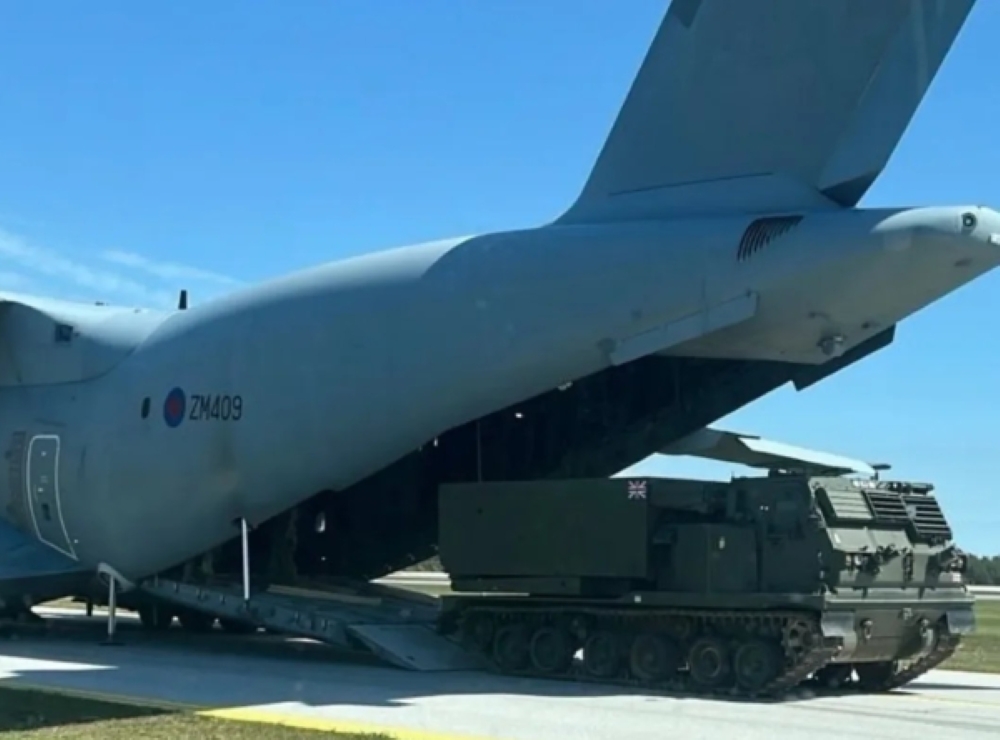
D battery, 3 Royal Horse Artillery, is deployed in the “High North” for exercises and has carried out a “GMLRS raid” within the framework of Exercise SWIFT RESPONSE in Sweden.
This latest edition of SWIFT RESPONSE has seen US and british paratroopers land on the Swedish island of Gotland to capture a forward operating airstrip which has then been used to land HIMARS via USAF C-130Js and UK M270s via RAF A-400M ATLAS.
The M270s flew into Gotland not from the UK but from Finland, where 3 RHA is deployed for a complex exercise with live, tactical firings.
The detachment flown into Gotland fired M28 practice rockets alongside US HIMARS. This is an interesting development in itself because the UK is not a known M28 user. Until late 2023, the British Army used the sub-calibre 70 mm Reduced Range Practice Rocket for training firings within the UK, due to firing range limitations.
It was reported at the end of 2023 that D Battery, 3 RHA, then deployed in Estonia, had fired the last 89 sub-calibre practice rockets in UK stock but plans for a replacement practice munition have not yet been publicly detailed. It seems likely that an undisclosed number of M28 practice rockets has been acquired, alongside live, unitary warhead M31 rockets, in the replenishment order that Government says had been placed but for which we have no publicly available detail.
Training for GMLRS firings in the UK is pretty much impossible as there are no ranges with satisfactory characteristics to ensure full-range, live firings can be carried out. Until 2023, Royal Artillery crews only got to fire live M31 rockets in the US, at White Sands. It was in Autumn 2023 that the Royal Artillery first carried out live M31 firings in Finland with Exercise LIGHTNING STRIKE. At the time it was said the UK and Finland would look at the possibility of repeating the exercise twice a year, allowing more british crews to get live experience.
In the meanwhile, new simulators have been ordered to enhance synthetic training in the UK. After the M28 firings in Sweden, the M270s flew back to Finland to rejoin the rest of D Battery for live M31 firings, within Exercise NORTHERN STRIKE.
GMLRS is a key capability for the present and the future of the British Army. The M270 fleet is being expanded and upgraded to A2 standard with the expectations that new ammunition natures will be acquired, including the Precision Strike Missile (PrSM), the GMLRS Extended Range and the MBDA UK-developed Land Precision Strike. The UK might also be interested in the Alternative Warhead, to restore some area-attack capability lost along with bomblets when the Treaty on their ban was signed. The UK also initiated a technology development program to integrate advanced payloads on GMLRS, including drones, guided anti-armour sub-munitions, jammers and/or other electronic payloads plus “counter mobility” solutions, both lethal and not.
At present, the British Army has at least 61 M270A2 on order (and 8 unique M270 recovery vehicles, a UK-only variant), which already represent almost a doubling of a fleet that in recent times counted just 35 launchers, temporarily reduced to 29 by the handing of 6 vehicles to Ukraine. A 214 million USD contract announced by the US Department of Defense for further M270A2 work is believed to cover the planned order for a final UK batch of 15 M270A2 and 1 Recovery vehicle but this has not yet been officially confirmed.
Until recently, the UK government position was that the final batch was “under consideration”. The Land Deep Fires programme for 85 platforms (76 launchers and 9 recovery vehicles) was started under the previous Administration and the current Labour government will have reviewed it alongside other plans in the context of the latest Strategic Defence Review.








.png)
